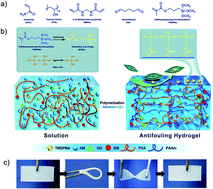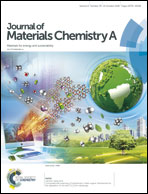Preventing diatom adhesion using a hydrogel with an orthosilicic acid analog as a deceptive food†
Abstract
With the development of technology and society, ocean development is becoming more and more necessary and frequent. During this process, marine biofouling is an extensive problem, causing economic loss and operational problems. A lot of attempts have been made to overcome these troubles. However, there is still an urgent need to develop an efficient and environmentally friendly method to resist marine antifouling. As reported, the adhesion of diatoms is one of the key steps in the marine fouling process. In this research, for the first time, 3-(trimethoxysilyl)propylmethacrylate (TMSPMA), which is a synthetic orthosilicic acid analog (SOSA) after hydrolysis, is used as an anti-diatom agent against diatom adhesion in the preparation of a SOSA hydrogel. Detailed investigations suggest that the hydrogel with the SOSA shows excellent anti-diatom adhesion properties (0 Navicula and 0.2 ± 0.5 diatoms mm−2 of Nitzschia closterium adhered). The results also indicate that the SOSA anti-diatom effects are targeted; only the organisms that attempted to adhere to the surface of the SOSA hydrogel are affected. Owing to its high efficiency and environmentally-friendly properties, SOSA hydrogels have great potential for marine antifouling applications.



 Please wait while we load your content...
Please wait while we load your content...